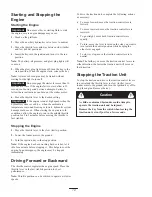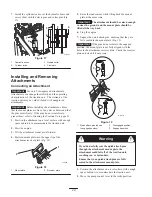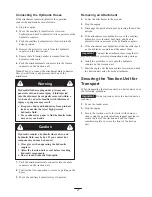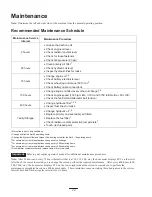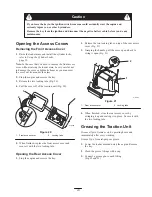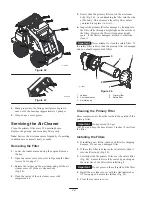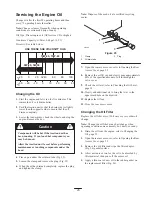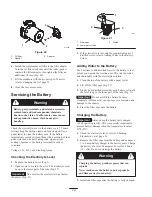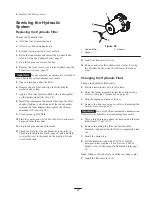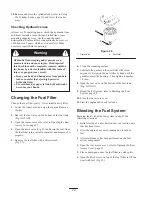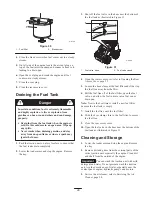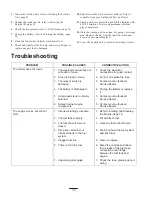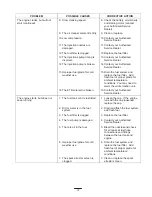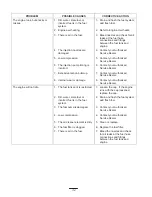
17
3
4
5
1
2
Figure 13
1.
Flow divider control
2.
Knob
3.
12 o’clock position
4.
10 to 11 o’clock position
5.
9 o’clock position
•
Move the flow divider control to the twelve o’clock
position to provide maximum speed to the traction unit
hydraulics.
Use this setting for fast operation of the traction unit.
•
Move the flow divider control between the twelve
o’clock and nine o’clock positions to slow the traction
unit hydraulics and fine tune the speed.
Use a setting in this range with attachments with
hydraulics where you need to both run the attachment
and move the traction unit hydraulics, such as the
auger, boring unit, hydraulic blade, and tiller.
•
Move the control to the nine o’clock position to
transfer all hydraulic flow to the auxiliary hydraulics
of the attachment.
In this setting, the traction unit hydraulics will not
work. Use this setting with hydraulic attachments that
do not required the traction unit hydraulics. There are
currently no attachments that require the nine o’clock
position; however, the trencher does work best if you
set it close to nine o’clock so that the traction unit will
creep slowly when trenching.
Note: The flow divider control can be fixed in place by
turning the knob on the control clockwise until it contacts
the dial (Fig. 13).
Indicator Lights
The indicator lights warn you in the case of a system
malfunction and, in the case of the glow plug light,
indicate that the glow plugs are on. Figure 14 illustrates
the four indicator lights.
3
1
2
m–4603
4
Figure 14
1.
Oil pressure light
2.
Battery light
3.
Engine temperature light
4.
Glow plug light
Engine Temperature Light
If the engine temperature light is on, the engine is
overheating. Stop the engine and allow the traction unit
to cool down. Check the coolant level and the belts to the
fan and water pump. Fill the coolant as required and
replace any worn or slipping belts. If the problem
persists, contact your Authorized Toro Dealer for
diagnostics and repair.
Oil Pressure Light
This light is on for a few seconds whenever you start the
engine. If the oil pressure light is on while the engine is
running, the engine oil pressure is low. Stop the engine
and allow the traction unit to cool down. Check the oil
level and fill the crankcase with oil as needed. If the
problem persists, contact your Authorized Toro Dealer for
diagnostics and repair.
Battery Light
This light is on for a few seconds whenever you start the
engine. If the battery light is on while the engine is
running, the alternator, battery, or electrical system is
broken. Contact your Authorized Toro Dealer for
diagnostics and repair.
Glow Plug Light
This light is on when the key is turned to run before
starting the engine. The glow plug light will remain on
for up to 10 seconds, indicating that the glow plugs are
warming the engine. If the glow plug light is on while the
engine is running, the glow plugs are broken. Contact
your Authorized Toro Dealer for diagnostics and repair.
Summary of Contents for 22303
Page 6: ...6 Slope Chart...
Page 35: ...35...
















